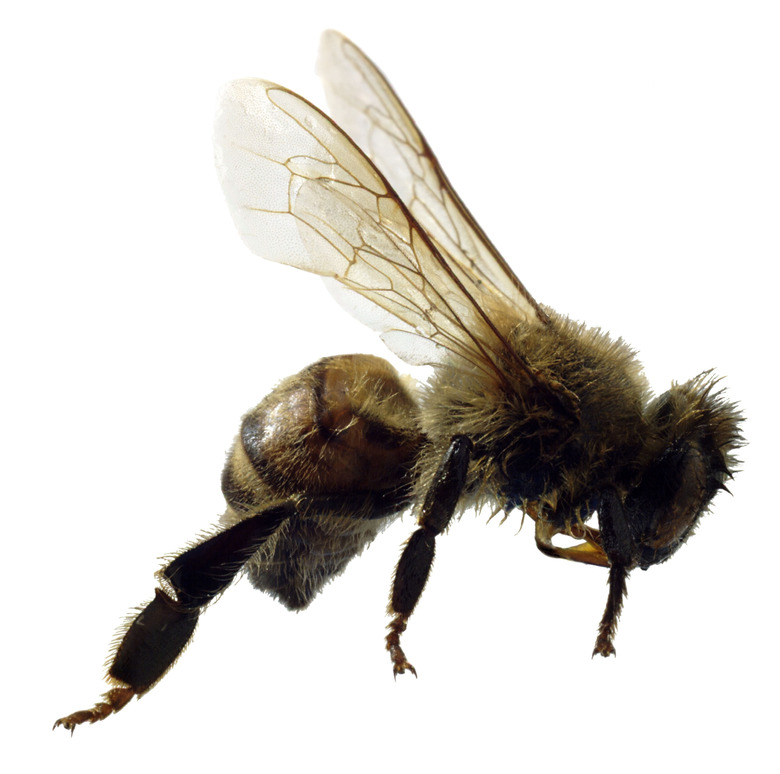Do Insects Reproduce Asexually?
Asexual reproduction is when a new individual organism is formed from the genetic material of a single parent. This contrasts with sexual reproduction, where the genetic material of two parents is combined to form offspring, like in humans. Some insects can reproduce asexually, effectively making clones of themselves.
Asexual Reproduction in Insects
Asexual Reproduction in Insects
Asexual reproduction comes in many types across the animal kingdom, including budding, fission and fragmentation, but parthenogenesis is the most common form in insects. Parthenogenesis is when an unfertilized egg develops into an individual. Depending on the species, an individual produced through asexual reproduction may be diploid, meaning the nuclei of their cells contain two sets of chromosomes, or haploid, meaning their cells only contain one set of chromosomes.
Individuals produced using sexual reproduction are always diploid as they have one set of chromosomes from their mother and one set from their father. Asexually reproduced individuals only have chromosomes from their mother's DNA, so their genetics are identical to hers.
Advantages of Asexual Reproduction
Advantages of Asexual Reproduction
One of the major benefits of asexual reproduction in insects are that an individual can produce a vast number of offspring in a shorter time than they could with sexual reproduction. Another benefit of asexual reproduction in insects is that there is no need for a female to find a mate to produce offspring. As all the offspring end up being identical, asexual reproduction is most useful when environmental conditions are stable.
Disadvantages of Asexual Reproduction
Disadvantages of Asexual Reproduction
The primary disadvantage of asexual reproduction in insects or any organisms is that all offspring are genetically identical to each other and to the parent organism. While this is not a disadvantage when the environment is stable, it may be a huge disadvantage when the environment changes.
For example, soybean aphids (Aphis glycines) are a common pest for crops in the United States as they feed on plant sap. To withstand human pest eradication efforts, an individual aphid must have good camouflage, be resistant to pesticides and survive the cold winter weather conditions.
While a mother aphid may have all these genetic features and pass them off to her parthenogenic offspring, what happens when the winter is extra cold, the plants change color or a new pesticide is produced? When all individuals are the same, they have the same genetic coping abilities for adaptation.
Sexual reproduction produces more varied offspring, which are therefore more likely to receive random genetic mutations that help them adapt when faced with environmental change. When offspring are produced through sexual reproduction, they have a mixture of genetics from their mother and father, which gives them a potentially different set of genetic tools that allow them to adapt.
Asexual Reproduction in Honeybees
Asexual Reproduction in Honeybees
Social honeybees (Apis mellifera) have a complex reproductive cycle that involves both sexual and asexual reproduction. Before the colony's queen first settles, she takes flight and mates with multiple males to store their sperm. The queen then starts her colony by producing both fertilized diploid eggs and unfertilized haploid eggs.
The fertilized eggs produce female worker bees who stay in the colony, while the unfertilized eggs develop into fertile males who leave. Other social insects of the order Hymenoptera, including all ants and some wasps, have a similar sex determination system.
Producing Queens
Producing Queens
While most of the social Hymenoptera species produce new queens from sexual reproduction, the same way the female worker bees are produced, there is always an exception to the rule. For example, queens among the Cape Honeybees (Apis mellifera capensis) and two ant species (Cataglyphis cursor and Wasmannia auropunctata) are produced asexually like the males. This strategy prevents a queen's genetics from being altered by her mates during sexual reproduction so that the queens are always genetic replicas of each other.
Asexual Reproduction in Stick Insects
Asexual Reproduction in Stick Insects
Stick insect (Phasmatidae) females can lay eggs throughout their lives, even if they have never mated. Researchers in New Zealand studying the species Clitarchus hookeri found areas in the wild where males do not appear to exist and the females reproduce solely through parthenogenesis. Though similar, the hatching success of eggs and lifetime fecundity tend to be slightly higher in stick insect females that mate compared with those that never do.
References
- Pressbooks: Concepts of Biology: How Animals Reproduce
- The Tech Interactive: Evolution
- Nature Education: Sex Determination in Honeybees
- University of Portland: Sexual vs. Asexual Reproduction in a Stick Insect (Megaphasma Dentricus)
- Journal of Heredity: Asexually Produced Cape Honeybee Queens (Apis Mellifera Capensis) Reproduce Sexually
- Molecular Ecology: Geographic Parthenogenesis and the Common Tea-Tree Stick Insect of New Zealand
Cite This Article
MLA
Jerrett, Adrianne. "Do Insects Reproduce Asexually?" sciencing.com, https://www.sciencing.com/insects-reproduce-asexually-10015868/. 30 September 2021.
APA
Jerrett, Adrianne. (2021, September 30). Do Insects Reproduce Asexually?. sciencing.com. Retrieved from https://www.sciencing.com/insects-reproduce-asexually-10015868/
Chicago
Jerrett, Adrianne. Do Insects Reproduce Asexually? last modified August 30, 2022. https://www.sciencing.com/insects-reproduce-asexually-10015868/
